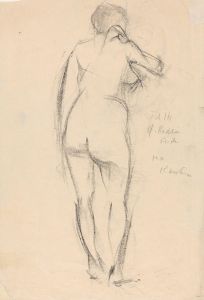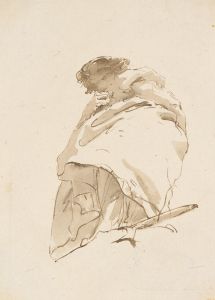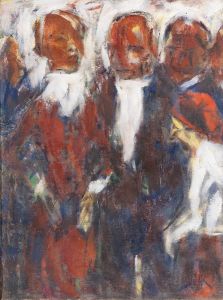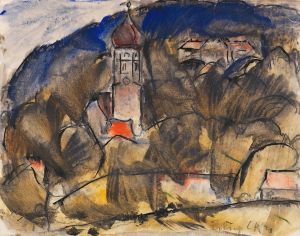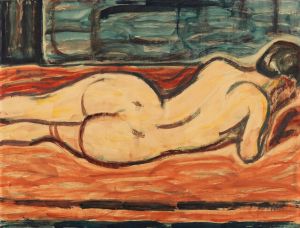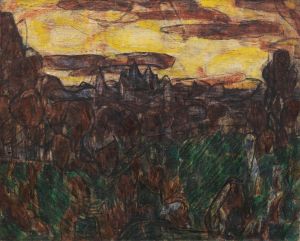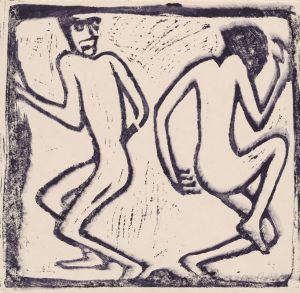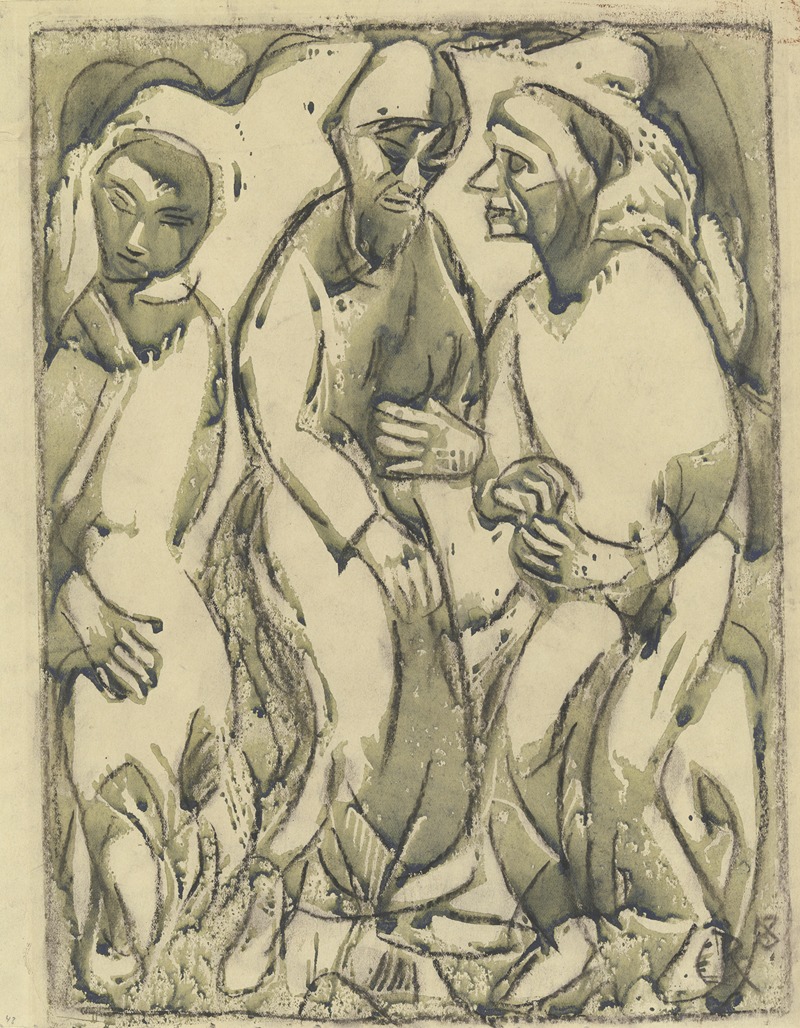
Three standing men
A hand-painted replica of Christian Rohlfs’s masterpiece Three standing men, meticulously crafted by professional artists to capture the true essence of the original. Each piece is created with museum-quality canvas and rare mineral pigments, carefully painted by experienced artists with delicate brushstrokes and rich, layered colors to perfectly recreate the texture of the original artwork. Unlike machine-printed reproductions, this hand-painted version brings the painting to life, infused with the artist’s emotions and skill in every stroke. Whether for personal collection or home decoration, it instantly elevates the artistic atmosphere of any space.
Christian Rohlfs was a prominent German painter, known for his contributions to expressionism. His work "Three Standing Men" is one of his notable pieces, reflecting his unique style and artistic evolution. Rohlfs was born on December 22, 1849, in Groß Niendorf, Germany, and he became one of the leading figures in German expressionism. His career spanned several decades, during which he experimented with various styles and techniques.
"Three Standing Men" is a painting that exemplifies Rohlfs' mature style, characterized by bold colors and dynamic forms. Although specific details about the painting's creation, such as the exact year it was painted, are not widely documented, it is understood to be part of his later works when he fully embraced expressionism. This period of Rohlfs' career was marked by a departure from his earlier naturalistic and impressionistic influences, moving towards a more abstract and emotive form of expression.
The painting depicts three male figures standing together, rendered in a way that emphasizes their form and presence rather than realistic detail. Rohlfs' use of color and brushwork in "Three Standing Men" is indicative of his expressionist approach, where the emotional impact of the image takes precedence over precise representation. The figures are often interpreted as embodying a sense of solidarity and strength, common themes in Rohlfs' work during this time.
Rohlfs' journey as an artist was significantly influenced by his exposure to various art movements and his personal experiences. He studied at the Weimar Academy of Arts and was initially influenced by impressionism and naturalism. However, his style evolved dramatically after he encountered the works of the French avant-garde and the burgeoning expressionist movement in Germany. This transformation is evident in "Three Standing Men," where the focus is on conveying emotion and mood through color and form.
Throughout his career, Rohlfs faced several challenges, including health issues and the political turmoil of his time. Despite these obstacles, he continued to produce art that resonated with the expressionist ethos of exploring the human condition and emotional experience. His work gained recognition, and he became associated with the Brücke group, although he was not a formal member. This association further solidified his place in the expressionist movement.
Christian Rohlfs passed away on January 8, 1938, in Hagen, Germany. His legacy is preserved through his extensive body of work, which continues to be studied and appreciated for its contribution to modern art. "Three Standing Men" remains a significant piece within his oeuvre, illustrating his mastery of expressionist techniques and his ability to convey profound human emotions through art.





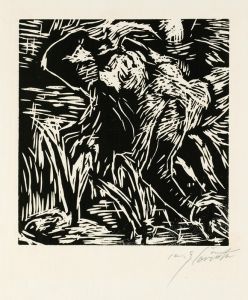
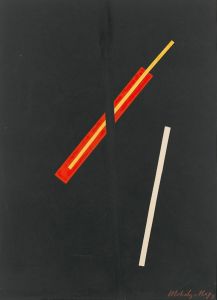
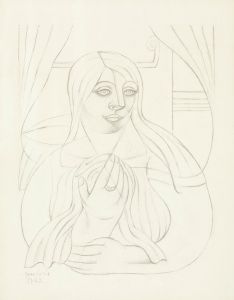
![Design for unidentified restaurant interior in blue and vermillion with mural featuring 2 female nudes and panel with tulip inserts.] [Drawing for ‘Dining Room’](/imgs/249301/s/winold-reiss-design-for-unidentified-restaurant-interior-in-blue-and-vermillion-with-mural-featuring-2-female-nudes-and-panel-with-tulip-inserts-drawing-for-dining-room-880480c5.jpg)

